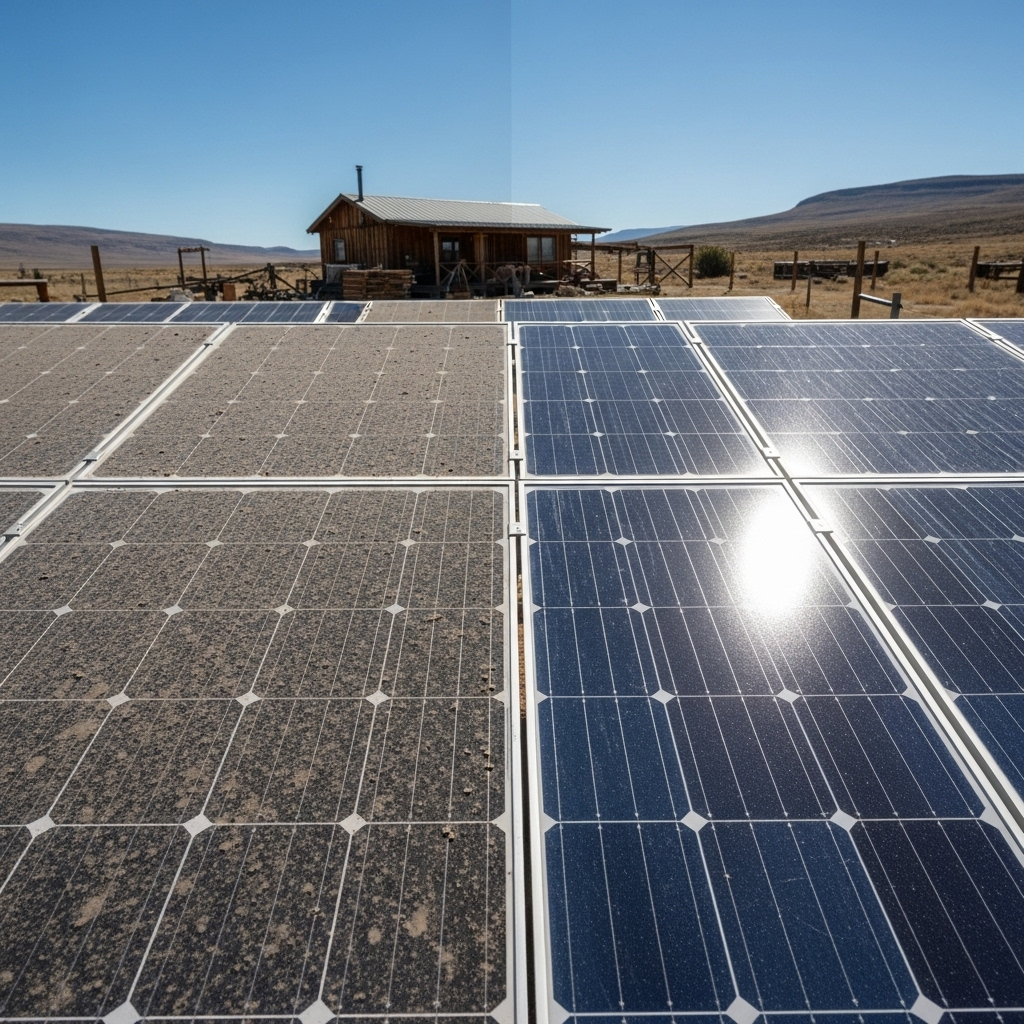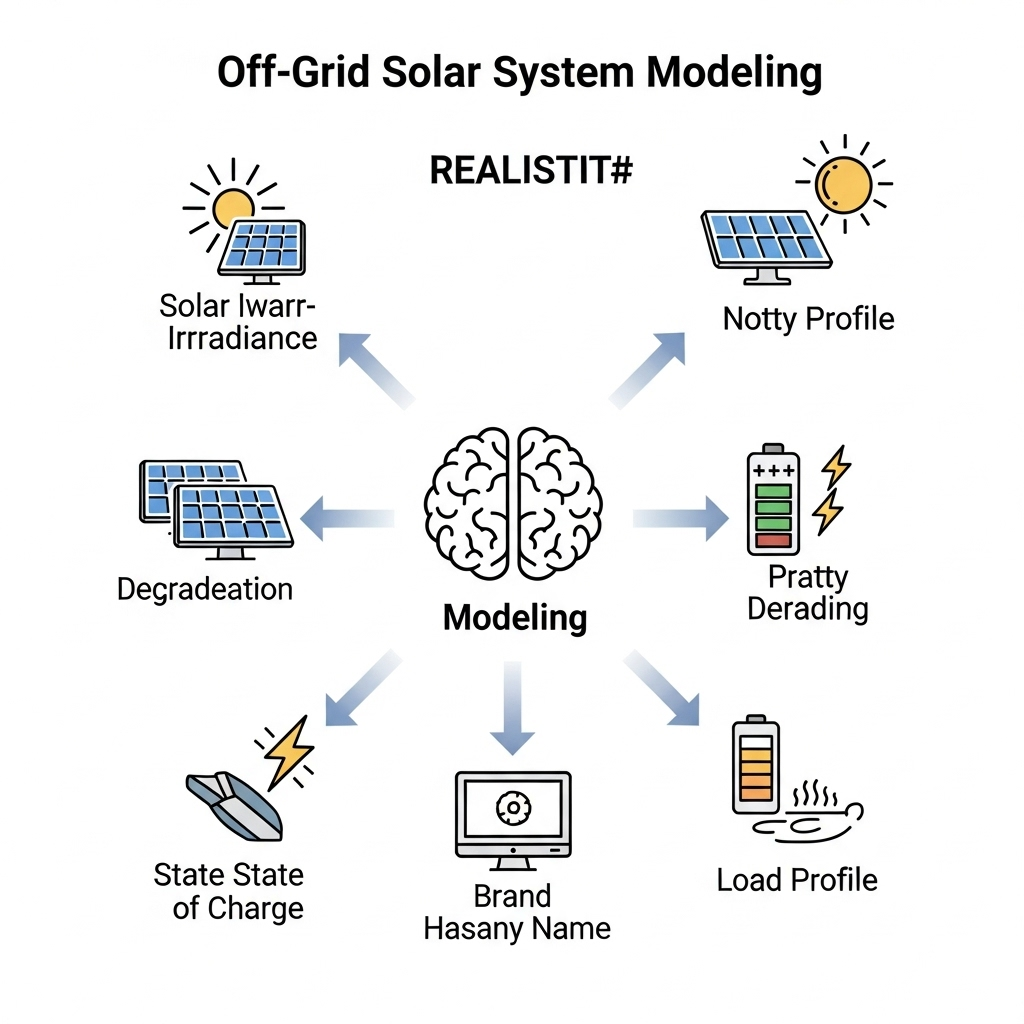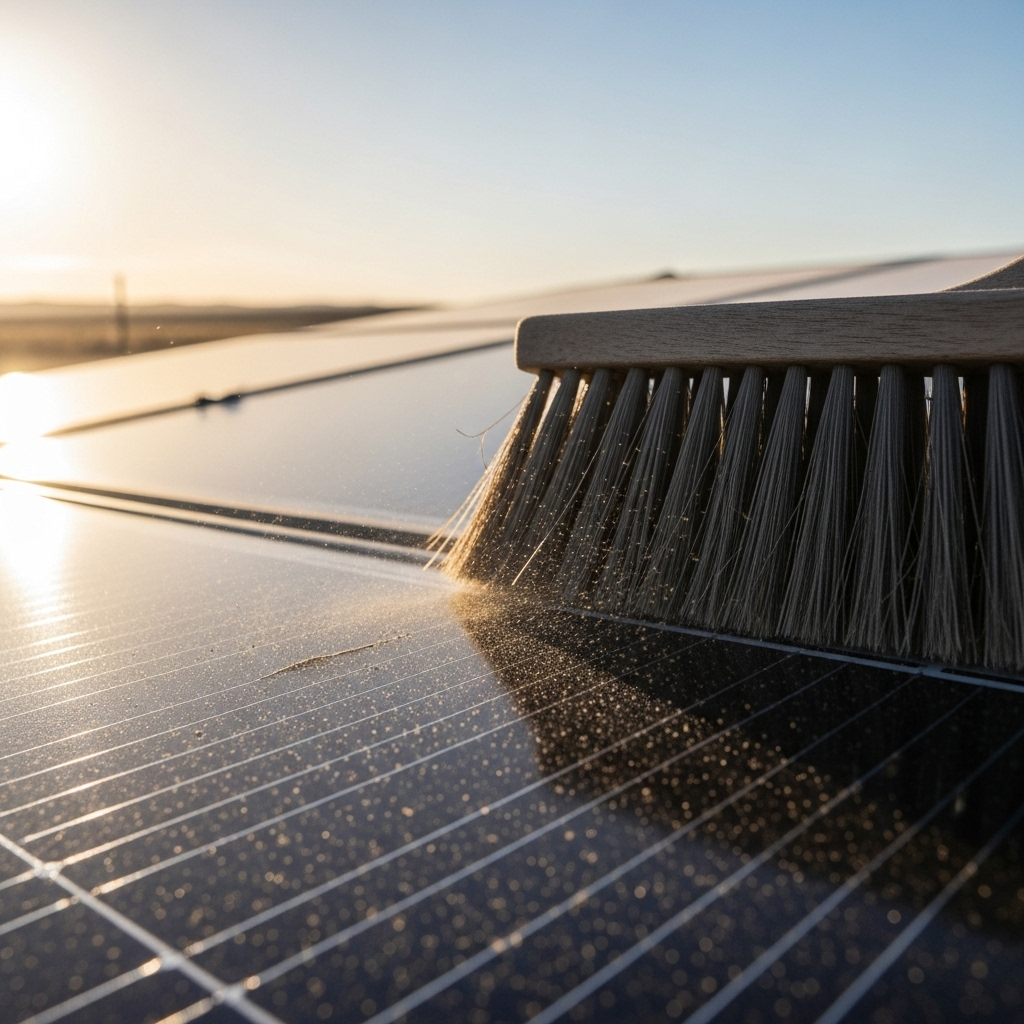Living off-grid offers true energy independence. Your solar array is the heart of this freedom, silently converting sunlight into power. But over time, a layer of dust, pollen, and grime can accumulate, slowly diminishing its performance. This raises a critical question for every off-grid system owner: what is the right cleaning frequency for remote PV arrays? There is no single answer. The optimal off-grid PV array cleaning schedule depends entirely on your specific location, climate, and system design. This article provides a framework to help you create a smart, efficient maintenance plan that protects your investment and maximizes your energy harvest.
The Impact of Soiling on Energy Production
Soiling is the technical term for anything that covers the surface of your solar panels and blocks sunlight. This includes dust, dirt, bird droppings, pollen, and salt spray. Even a thin, barely visible layer can significantly reduce your system's output. In some dusty locations, energy losses from soiling can reach 25% or more if left unmanaged. For an off-grid system, this loss has immediate consequences. Reduced power generation means your lithium battery storage may not receive a full charge during the day. This can lead to an energy shortfall at night or force you to rely more heavily on a backup generator, defeating the purpose of your solar investment.
According to a report by the International Energy Agency, Technology Roadmap - Solar Photovoltaic Energy 2010, off-grid systems depend on components like batteries for backup power, which makes consistent and predictable energy generation from PV modules vital. Keeping panels clean is a fundamental step in ensuring that consistency.
Factors That Determine Your Cleaning Schedule
Your ideal solar panel maintenance off-grid plan is not a fixed calendar event. It's a dynamic response to your unique environment. Several key factors influence how quickly your panels get dirty.
Your Geographic Location and Environment
Where your array is located is the single most important factor. An array in a dusty desert will need a far different cleaning frequency than one in a temperate forest.
- Arid and Dusty Regions: If your property is in a desert or a dry, windy area, you face the highest soiling risk. Fine dust and sand can coat panels quickly. In these locations, you may need to clean your panels monthly, or even more frequently during dry, windy seasons.
- Agricultural and Rural Areas: Farmland brings its own challenges. Pollen in the spring, dust from plowing and harvesting, and organic matter can create a sticky film on your panels. Your cleaning schedule might be seasonal, with more frequent cleanings required after periods of high agricultural activity.
- Coastal or Humid Environments: Proximity to the ocean introduces salt spray. When this salt combines with humidity, it can form a corrosive, hazy layer that rain alone cannot wash away. This film is not only hard to remove but can also accelerate corrosion of the panel frames.
The Tilt Angle of Your Panels
The installation angle of your PV array plays a significant role in its ability to self-clean. Panels installed at a steeper tilt (generally 15 degrees or more) allow rainwater to run off more effectively, taking loose dust and debris with it. In contrast, panels on flat or low-slope roofs (less than 15 degrees) are highly susceptible to soiling. Water can pool, and debris accumulates easily, requiring much more frequent manual cleaning.
Local Weather Patterns
Pay close attention to your local weather. Frequent rainfall is nature's free panel washing service. If you live in an area with regular, heavy downpours, you may be able to clean less often. Conversely, long periods of drought will necessitate a more hands-on approach to your off-grid PV array cleaning schedule. Wind can be a double-edged sword; it can either blow dust onto your panels or help clear away light, loose debris.
Creating a Data-Driven Cleaning Strategy
Instead of guessing, you can use your own system's data to determine the perfect time for cleaning remote solar panels. This performance-based approach saves you time and ensures you are only cleaning when it's truly necessary.
Monitor Your System's Performance
Your solar energy system is a powerful data source. Most modern solar inverters and battery management systems provide detailed monitoring. You can track your daily, weekly, and monthly energy production. To establish a baseline, record your system's peak output on a clear, sunny day right after a thorough cleaning or a heavy rainstorm. As you continue to monitor, a gradual and otherwise unexplained decline in energy production is a clear indicator that it's time to clean. As highlighted in the Ultimate Reference for Solar Storage Performance, consistently tracking your system's key metrics is fundamental to proactive maintenance. A noticeable drop in kilowatt-hour production on a sunny day is a primary red flag for soiling.
Performance-Based Cleaning vs. a Fixed Schedule
A fixed schedule (e.g., 'clean on the first of every month') is simple but often inefficient. You might waste effort cleaning panels that are already clean or wait too long, losing valuable energy production. A performance-based approach is far more effective. With this method, you decide to clean only when your system's output drops by a predetermined percentage, such as 5% or 10% from its clean baseline. This data-driven strategy is especially practical for remote locations where a trip to the site requires significant effort.
Sample Cleaning Frequency Guidelines
While monitoring is best, this table can serve as a starting point for your off-grid PV array maintenance frequency. Adjust it based on your own observations.
| Environment Type | Common Soiling Agents | Recommended Base Frequency | Key Indicator for Cleaning |
|---|---|---|---|
| Desert / Arid | Sand, Dust | Every 1-3 months | Visible dust layer; >10% power drop |
| Agricultural | Pollen, Farm Dust, Organic Matter | Every 3-6 months (or seasonally) | Noticeable film; post-harvest power drop |
| Coastal | Salt Spray, Dust | Every 2-4 months | Hazy film on panel surface |
| Temperate / Forested | Pollen, Bird Droppings, Leaf Litter | Every 6-12 months | Visible debris; >5% power drop |
Disclaimer: This table provides general recommendations. Always prioritize data from your own system monitoring.
A Smart Schedule for True Energy Independence
Maintaining your remote PV array is not just about keeping it clean; it's about ensuring your energy security. A dirty panel is an underperforming asset. By moving away from a rigid calendar and adopting a flexible, data-informed cleaning strategy, you take control. You clean when necessary, save effort when it is not, and keep your system running at peak efficiency. This proactive approach protects your lithium battery from chronic undercharging, reduces your reliance on backup power, and secures the long-term health of your entire off-grid system. As the Electricity Storage Valuation Framework from IRENA notes, maximizing renewable energy generation is key for the reliability of mini-grids. For your personal mini-grid, that process starts with a clean, efficient solar array. Ultimately, a smart cleaning schedule is a small investment of time that pays significant dividends in power and peace of mind.
Frequently Asked Questions
Can I just rely on rain to clean my remote solar panels?
Rain helps, but it is often not a complete solution. It can wash away loose dust but may struggle with sticky grime like pollen, salt spray, or bird droppings. In areas with infrequent rain or for panels with a low tilt angle, manual cleaning is necessary to maintain optimal performance.
What is the best time of day to clean solar panels?
The best times are early in the morning or late in the evening when the panels are cool to the touch. Cleaning panels in the heat of a sunny day can cause thermal shock, potentially damaging the glass. Additionally, the cleaning water can evaporate too quickly on a hot surface, leaving behind residue and spots.
How much energy am I really losing if I do not clean my panels?
The amount of energy loss varies dramatically based on your location. According to studies and field data, losses in moderately dusty areas can be around 5-10%. In severe environments like deserts or near industrial sites, these losses can easily exceed 25%. The only way to know your specific loss is to monitor your system's output before and after cleaning.
Do I need special cleaning solutions for my PV array?
In most cases, no. Soft or deionized water combined with a soft-bristle brush or a high-quality squeegee is sufficient. You should avoid using harsh detergents, abrasive powders, or rough scrubbing tools, as these can scratch the glass and damage the panel's anti-reflective coating, permanently reducing its efficiency.





Leave a comment
All comments are moderated before being published.
This site is protected by hCaptcha and the hCaptcha Privacy Policy and Terms of Service apply.